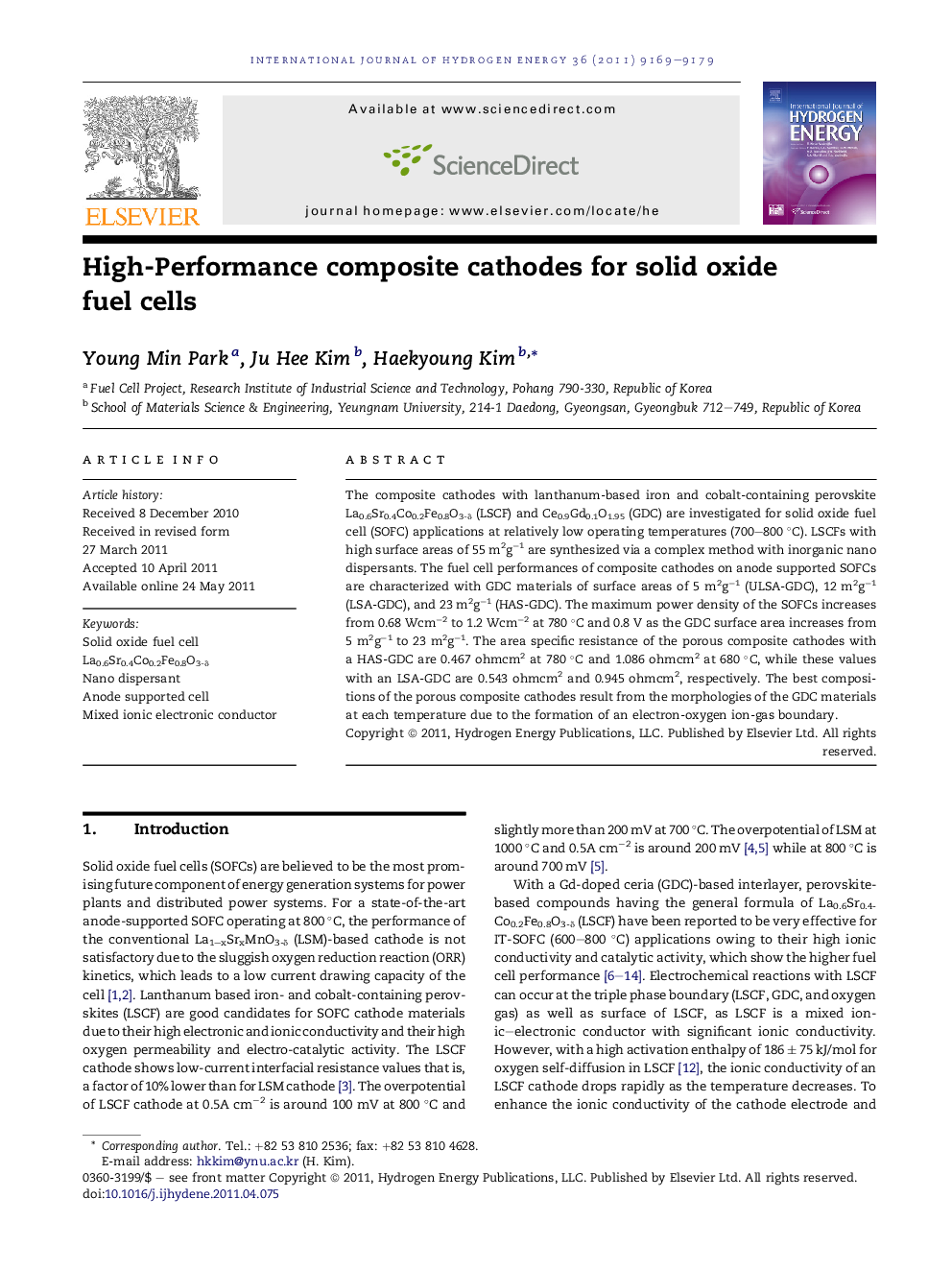| کد مقاله | کد نشریه | سال انتشار | مقاله انگلیسی | نسخه تمام متن |
|---|---|---|---|---|
| 1282513 | 1497578 | 2011 | 11 صفحه PDF | دانلود رایگان |

The composite cathodes with lanthanum-based iron and cobalt-containing perovskite La0.6Sr0.4Co0.2Fe0.8O3-δ (LSCF) and Ce0.9Gd0.1O1.95 (GDC) are investigated for solid oxide fuel cell (SOFC) applications at relatively low operating temperatures (700–800 °C). LSCFs with high surface areas of 55 m2g−1 are synthesized via a complex method with inorganic nano dispersants. The fuel cell performances of composite cathodes on anode supported SOFCs are characterized with GDC materials of surface areas of 5 m2g−1 (ULSA-GDC), 12 m2g−1 (LSA-GDC), and 23 m2g−1 (HAS-GDC). The maximum power density of the SOFCs increases from 0.68 Wcm−2 to 1.2 Wcm−2 at 780 °C and 0.8 V as the GDC surface area increases from 5 m2g−1 to 23 m2g−1. The area specific resistance of the porous composite cathodes with a HAS-GDC are 0.467 ohmcm2 at 780 °C and 1.086 ohmcm2 at 680 °C, while these values with an LSA-GDC are 0.543 ohmcm2 and 0.945 ohmcm2, respectively. The best compositions of the porous composite cathodes result from the morphologies of the GDC materials at each temperature due to the formation of an electron-oxygen ion-gas boundary.
► Porous composite cathodes based on La0.6Sr0.4Co0.2Fe0.8O3-δ (LSCF, 55 m2g−1) are characterized as a function of Ce0.9Gd0.1O1.95 (GDC) surface area (HSA-GDC(23 m2g−1), LSA-GDC(12 m2g−1), and ULSA-GDC (5 m2g−1)).
► At the higher temperature, 780 °C, the composite cathode with the higher surface area (23 m2g−1) shows the highest fuel cell performance of 0.8 Acm−2 at 0.9 V and a maximum power density of 1.8 Wcm−2.
► However, at the lower temperature, 680 °C, the composite cathode with the lower surface area (12 m2g−1) shows the highest fuel cell performance 0.3 Acm−2 at 0.9 V and a maximum power density of 0.7 Wcm−2.
► The use of GDC materials with the higher surface area may not effectively build up the electron-conducting path of the LSCF, which results in an increase of the activation energy for an electrical conduction.
► To obtain high fuel cell performance, the GDC materials for porous composite cathodes must be selected carefully with considering the surface area.
Journal: International Journal of Hydrogen Energy - Volume 36, Issue 15, July 2011, Pages 9169–9179